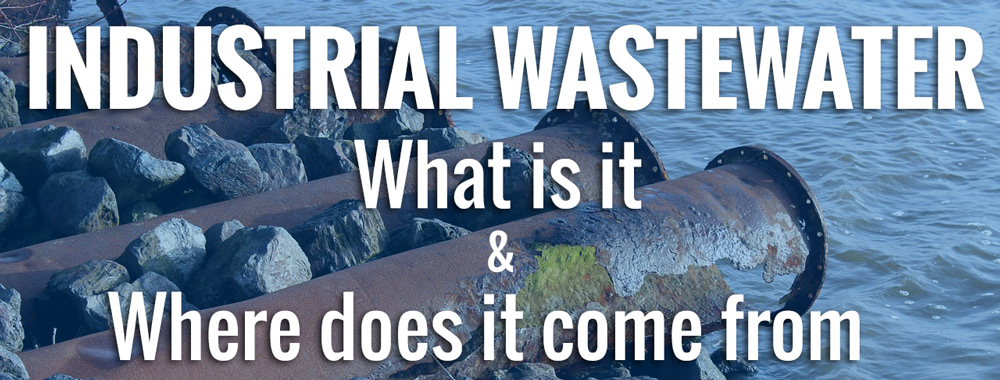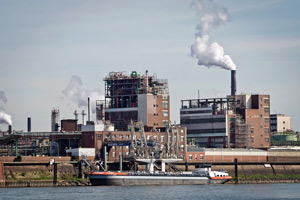One of the most common by-products of industrial or commercial activities is industrial wastewater, i.e., the water that was used to make commercial products across every industry in nearly all phases of production. Once this process water has been used, it is considered waste and needs to be treated before it is discharged.
What is Industrial Wastewater & Where Does it Come From?
Home > What is Industrial Wastewater & Where Does it Come From?

What is Industrial Wastewater?

Industrial wastewater is not just a by-product of oil and gas or mining and chemical manufacturing companies, but also a by-product of food and beverage processing industries, essential in the making of the clothes on your back, the shoes on your feet, the computer at your fingertips, and the car your drive.
To comply with existing laws, any organic and inorganic pollutants to water used in industrial production must be managed. Organic matter, metals, and the like found in the wastewater must be removed before the water can be safely discharged back to land, into bodies of water, or reused in plant operations.
What Industries Produce Industrial Wastewater?
Here are just a few examples:
Metal Finishers
The waste produced from metal finishing operations is typically a slurry (sludge) containing metals dissolved in liquid. Metal plating, metal finishing and printed circuit board (PCB) manufacturing operations produce a lot of sludge containing metal hydroxides such as ferric hydroxides, magnesium hydroxides, nickel hydroxides, zinc hydroxides, copper hydroxides, and aluminum hydroxides. Metal finishing wastewater must be treated to comply with all applicable regulations as these waste to the environment and to people/animals.
Industrial Laundries
The commercial textile services industry processes some 15 billion pounds of laundry per year and the wastewater generated from such uniforms, towels, floor mats and the like is filled with oil and grease, lint, sand, grit, heavy metals and VOCs, that must be treated before it can be released.
Chemical Manufacturing
Chemical industries face formidable environmental regulatory challenges in treating their wastewater effluents. Pollutants discharged at petroleum refineries and petrochemical plants include conventional pollutants like oil and grease, and suspended solids, and ammonia, chromium, phenols and sulfides.
Mining
Mine tailings are a mixture of water and finely ground rock that is left over from the mining operations once the mineral concentrate – such as gold or silver – is removed. Dealing effectively with Mine tailings is a key challenge facing mining companies. Tailings represent an environmental liability as well as a significant cost challenge and opportunity for reducing transportation and disposal costs. Proper treatment solutions can completely eliminate the need for tailing ponds.
Steel/Iron Production
The water used in the production of iron and steel is for cooling and by-products separation. It becomes contaminated with products like ammonia and cyanide in the initial conversion. Waste streams include benzene, naphthalene, anthracene, phenols, and cresols. The forming of iron and steel into sheet, wire or rods requires water as a base lubricant and coolant, along with hydraulic oils, tallow and particulate solids. The water used in galvanizing steel requires hydrochloric acid and sulfuric acid. Wastewaters include acidic rinse waters together with waste acid. Many steel industry wastewaters are contaminated by hydraulic oil also known as soluble oil.
Oil and Gas Fracking
Waste water from shale gas drilling is considered hazardous waste. It is highly salty, measuring at 32,300 mg per liter of sodium. In addition, the water mixed with industrial chemicals injected into the well to facilitate drilling contains high concentrations of sodium, magnesium, iron, barium, strontium, manganese, methanol, chloride, sulfate and other substances. Naturally occurring radioactive materials can return with the water to the surface during drilling (referred to as “NORM” by the industry). Water used in fracking can also contain hydrocarbons, including the toxic substances like benzene, toluene, ethylbenzene, and xylene that may be released during drilling.
Power Plants
Fossil-fuel power stations, particularly coal-fired plants, are a major source of industrial wastewater. Many of these plants discharge wastewater with significant levels of metals such as lead, mercury, cadmium and chromium, as well as arsenic, selenium, and nitrogen compounds (nitrates and nitrites). Plants with air pollution controls such as wet scrubbers typically transfer the captured pollutants to the wastewater stream.
Water/Wastewater Treatment Plants
Ironically, a by-product of wastewater treatment plants is producing wastes that contain many potential contaminants. Even chlorine-disinfected reclaimed water may contain such disinfectant by-products as trihalomethanes and haloacetic acids. Solid residues of wastewater treatment plants, known as biosolids, contain common fertilizers, but also may also contain heavy metals and synthetic organic compounds found in household products.
Food Processing
Food and agriculture wastewater has concentrations of pesticides, insecticides, animal waste, and fertilizers that all need to be managed. Processing of food from raw materials results in waters filled with high loads of particulate matter and soluble organic runoff or chemicals. Organic waste from animal slaughter and processing, the bodily fluid, intestinal matter, and blood all are sources of water contaminants that need to be treated.
How to Deal with Industrial Wastewater?
Filter presses are an important part of the on-site solution for treating industrial wastewater and effluent wastewater across a broad range of industries, just some of which were mentioned here. There are many more industrial applications of filter presses for wastewater treatment. Utilizing advanced industrial filter press technology, manufacturers can efficiently and effectively dewater their sludge in compliance with EPA, state, and local regulations. Filter presses – along with filter plates and filter cloth – can be customized to particular industrial requirements and proper selection is an important part of optimizing the press operations and getting good, dry filter cakes for cost-effective disposal. With a properly designed and engineered filter press system, manufacturing companies can achieve their wastewater objectives including minimizing environmental impact and reusing/conserving precious water resources.
Categories
- Filter Media Solutions
- Filter Press Solutions
- Filter Plate Solutions
- Filter Belt Solutions
- Vacuum Filtration Solutions
- Baghouse Solutions
- Pressure Leaf Solutions
- Your Markets & Applications
- Maintenance Tip of The Month
- Micronics Stories & Service Solutions
- News & Press Releases
- Leadership Perspectives
- Blog
Featured Posts
-
Micronics Announces
Strategic Acquisition of
SOLAFT® Filtration Solutions - Chennai Office Inauguration
- Micronics Engineered Filtration Group Announces Strategic Acquisition of AFT®, Dry Filtration Solutions Leader, from FLSmidth
- The Power of Teamwork
- Building a High-Performance Team: Key Factors for Success
- Micronics’ CEO, Chris Cummins, Is Featured On “Manufacturing Excellence” Podcast
- Micronics Announces Large, Multi-plant Filter Press Order for Lithium-Ion Battery Recycling for EVs
- Micronics Engineered Filtration Group Announces Strategic Acquisition of Trusted Filtration Industry Leader, National Filter Media (“NFM”)
Contact Our Experts
Micronics Is Your Trusted Partner for Total Engineered Filtration Solutions. We offer end-to-end solutions from Filter Media to Industry-Leading Filtration Equipment, to Spare Parts & Accessories, to On-Site Field Services and In-House Laboratory Services. Whether for your Filter Press, Belt Press, Leaf Filter, Vacuum Filter, or Baghouse, you can count on Micronics’ deep industry and applications knowledge for the right engineered filtration solution to meet your needs. We look forward to working with your team.
